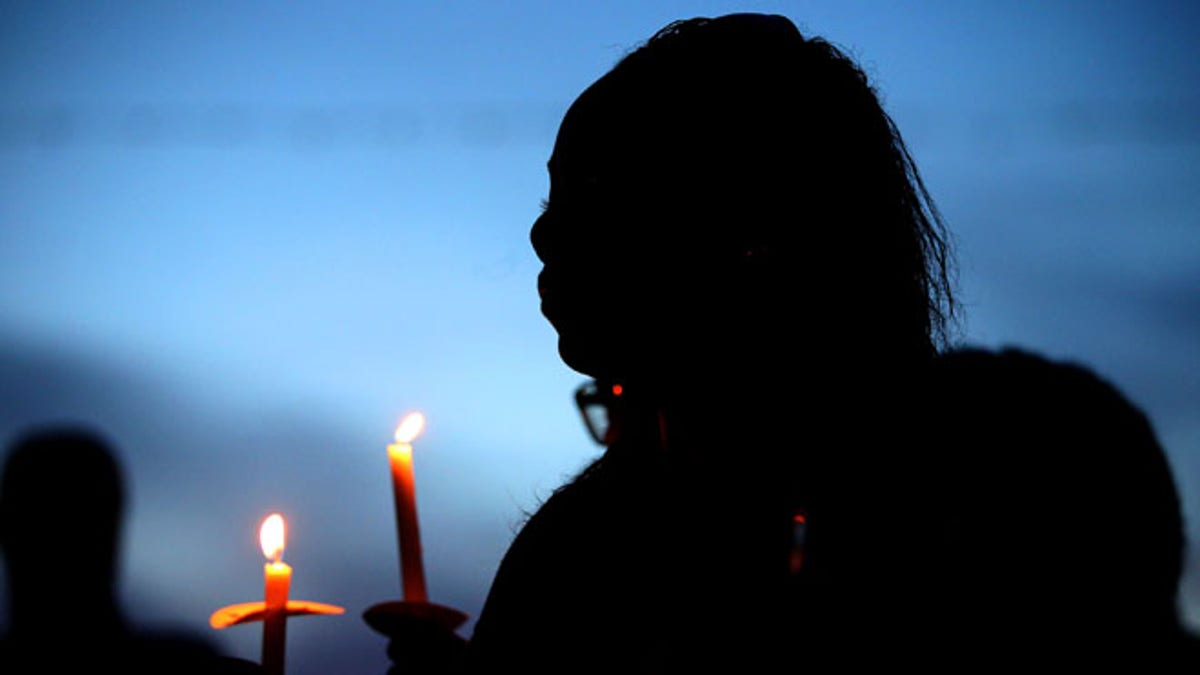
BATON ROUGE, LA - JULY 18: Mourners attend a candlelight vigil honoring Officer Matthew Gerald on July 18, 2016 in Baton Rouge, Louisiana. Officer Gerald, along with two other police officers, was shot and killed after gunman Gavin Long ambushed them on Sunday morning in front of the B-Quik gas station in Baton Rouge.(Photo by Sean Gardner/Getty Images) (2016 Getty Images)
HOUSTON (AP) – A Harvard University economist found that although police nationwide are more likely to use nonfatal force against blacks and Hispanics, that racial bias didn't translate to the use of deadly force by officers in Houston, one of the country's largest and most racially diverse cities.
Roland Fryer published a draft study this month that found that police were more than twice as likely to manhandle, beat or use some other kind of nonfatal force against blacks and Hispanics than against people of other races. Those findings were based on a federal survey detailing interactions between people and police and 10 years of data from the New York Police Department's controversial stop and frisk program.
But it was the Fryer's assertion that Houston police data showed "no racial differences in officer-involved shootings" in the nation's fourth largest city that raised eyebrows. The study, published by the National Bureau of Economic Research, found that Houston officers were 23.8 percent less likely to shoot at blacks and 8.5 percent less likely to shoot at Hispanics than they were to shoot at whites.
For his study, Fryer collected data about police-involved shootings from 10 law enforcement agencies — Houston, Dallas, Austin, Los Angeles County and six cities or counties in Florida. Although he drew some conclusions from all 10 data sets, Fryer relied mainly on Houston's because it was the most complete. The police department gave him unprecedented access to incident reports and other data regarding officer-involved shootings and arrests for crimes such as aggravated assault in which officers could have used lethal force, but didn't.
Of the 507 officer-involved shootings in Houston from 2000 through 2015, 52 percent involved black civilians, 33 percent involved Hispanics and 14 percent involved whites or people of other races.
Blacks make up about 24 percent of Houston's population — Hispanics make up about 44 percent and whites 26 percent — but Fryer said it wouldn't be fair to draw conclusions based solely on a comparison of a racial group's percentage of the total population and the percentage of members of that race being shot by police. So his study took into account several contextual factors, including the race of the officer and the person shot and the circumstances under which an officer encountered the person, among others.
"This doesn't speak to the questions being asked in the paper. The contextual factors of each encounter are important, which is why we focused on getting as granular data as possible," he said.
Fryer, who last year became the first African American to win a prestigious award given to the top U.S. economist under the age of 40, also cautioned that his findings shouldn't be seen as evidence of broader national trends.
"What I hope this paper leads to is a desire for more and better data that we can use to continue to ask questions and understand the role of race in police-civilian interactions," Fryer said in an email.
But the study has its detractors, some who have been critical of its methodology and its assertive conclusions about a lack of racial differences in officer-involved shootings.
"There is never going to be the perfect study because there is no objective evidence of what happens during each encounter," Justin Feldman, a Harvard doctorate student studying data on injuries and fatalities in order to monitor police violence and who criticized the study in a blog post, said in an interview. He added that there have been many other studies that have found racial bias in police shootings.
Some Houston community activists have also criticized the study for not including input from residents about their interactions with police and for relying only on police data, pointing out that the department has deemed nearly every officer-involved shooting over the past 11 years as justified. They also pointed out that the number of blacks shot by police is disproportionate to their population size.
Responding to criticism the study has received from Feldman and others, Fryer said he has been busy "working with cities across the country on making police data more accessible in order to expand our analysis in the future."
There is no national database on police-involved shootings, which has led to a piecemeal approach to examining the issue by academics and news organizations.
Justin Nix, a University of Louisville criminal justice professor who researches police use of force, called Fryer's work important but said it only represents a small sample size. He also cautioned against only focusing on a minority group's population percentage to make conclusions.
Martha Montalvo, Houston's acting police chief, said Fryer's study is an example of her agency's efforts to be transparent.
"I'm not naive enough to stand here and say we're perfect ... that we don't come with bias," she said. "We set those biases aside because there are policies in place and because of training."
